Pulling a vacuum is one of the important steps HVAC technicians perform during the repair and installation process of an appliance. In case you are wondering if the vacuum pump evacuates the refrigerant, we've researched the answer for you!
The evacuation process involves the refrigerant circuit. During the suction, the vacuum pump evacuates everything but the refrigerant. This method is done to make sure that the refrigerant circuit is free from foreign things such as nitrogen, air, and moisture which can hinder the flow of the refrigerant or cause system failure.
We will dive into further details regarding this topic, so stick with us until the end of this post to learn more. With that said, let's get right into it!
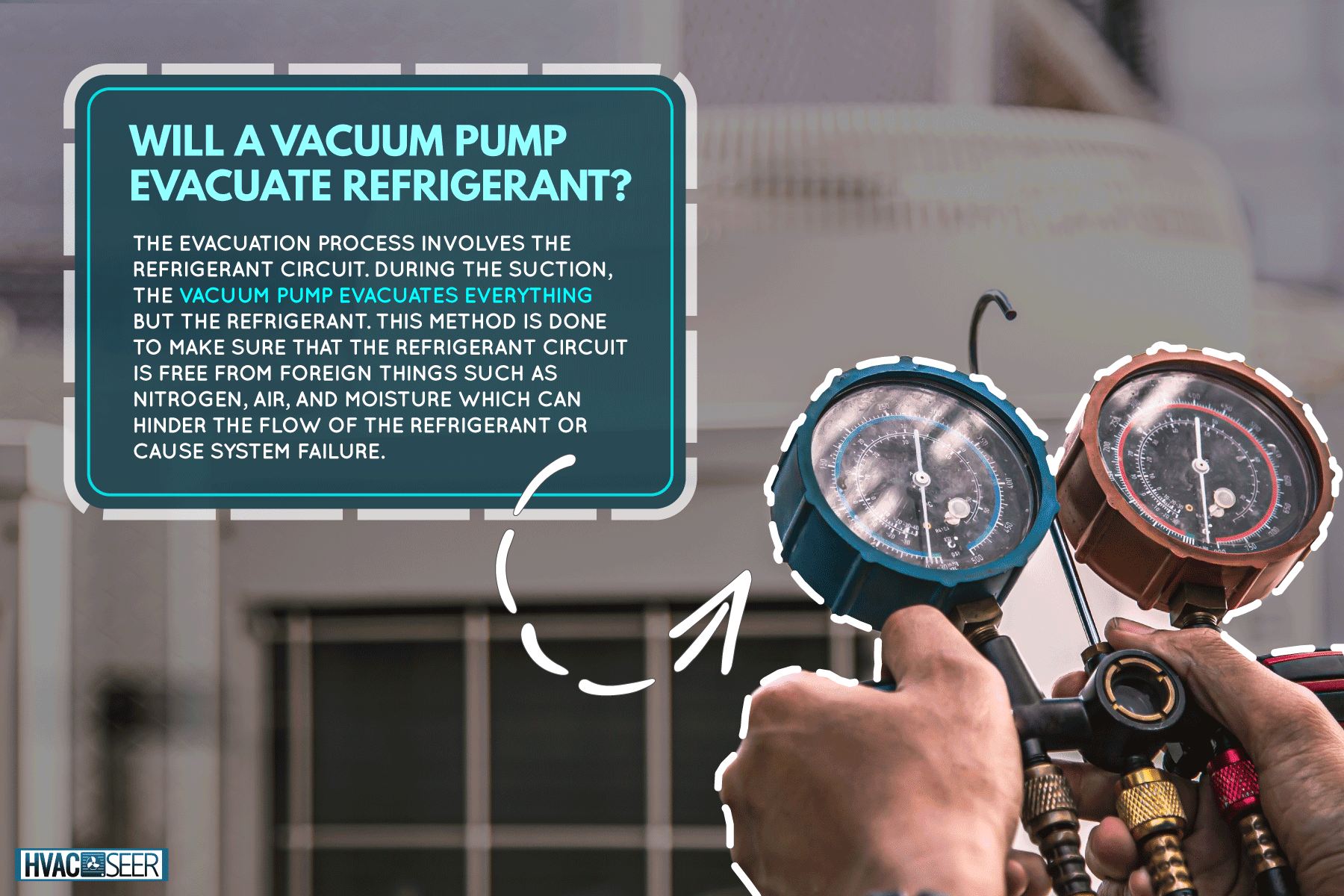
What Is An Evacuation Process?
The refrigerant is an important component of a lot of cooling, heating, and refrigeration systems. When there are other things present in the refrigerant circuit besides the refrigerant itself, the refrigerant will have a hard time performing its task.
Moisture, nitrogen, or air can cause problems to your refrigerant that's why the evacuation process needs to be performed during installation and repair.
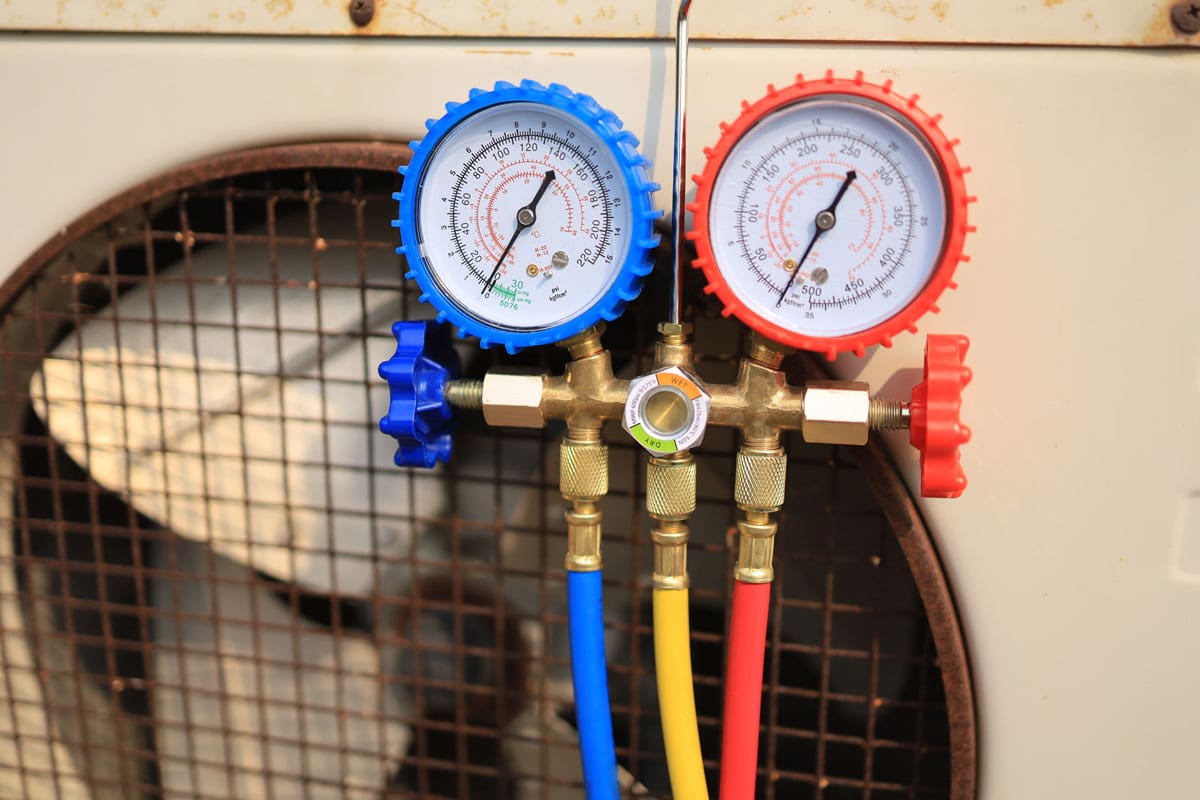
After assembling the appliance, it is impossible to not have any non-condensible within the system.
This is why you need to perform an evacuation process after the installation and every time you're doing some system repair. This process involves two stages.
The Degassing Stage
This is the easy step in the whole evacuation process. The degassing stage is simply about sucking out all air and vapors present in the refrigerant system.
Removal of non-condensible is very important since its presence causes an increase in head pressure. When the non-condensible get sucked out of the system, the operation cost will decrease, and the refrigerant can do its job efficiently.
The Dehydration Stage
The dehydration stage is quite challenging. In order for you to successfully perform the second stage of evacuation, you will need to make sure that the vacuum is deep enough, and the system is tightly sealed.
That's because the dehydration stage requires the vacuum pump to lower the pressure level so the moisture present in the system will evaporate. When moisture is not removed from the refrigerant system, your unit is prone to premature failure.
How To Evacuate The Refrigerant
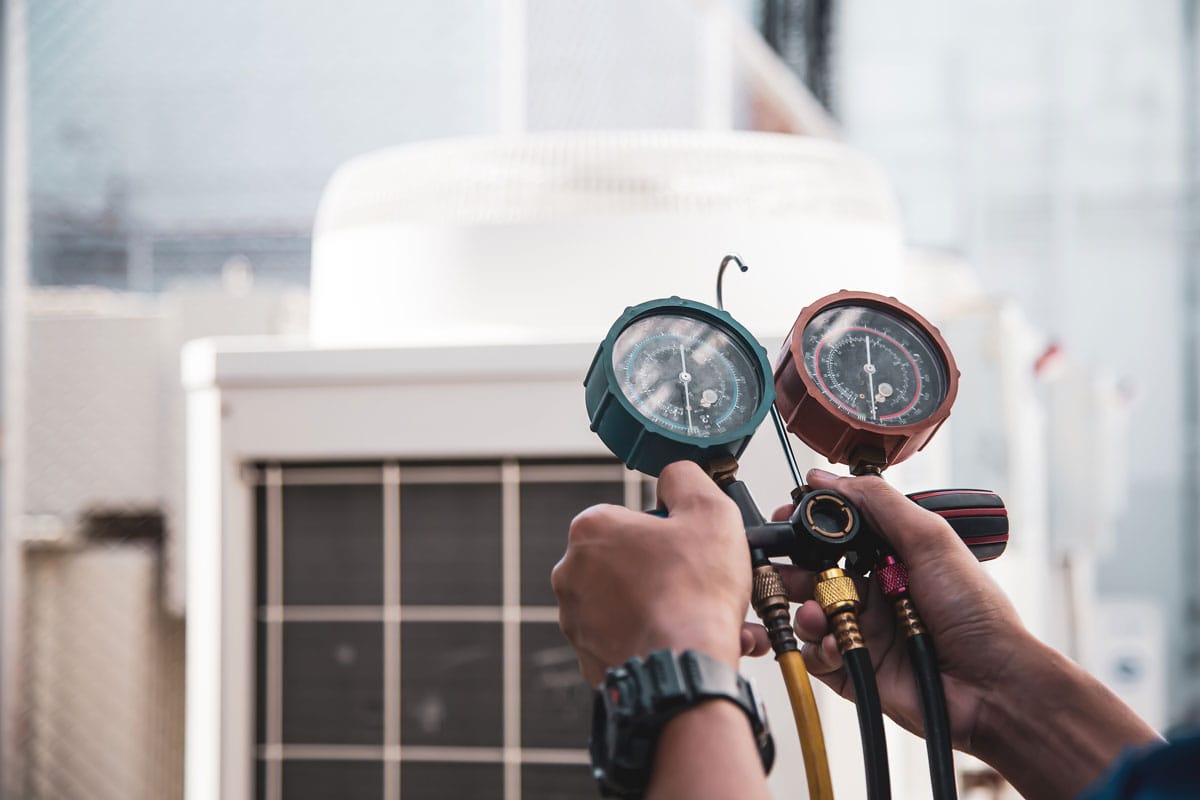
The evacuation process is usually performed by your HVAC technician during system repair and after installing your cooling, heating, or refrigeration systems.
In case you want to perform it on your own, here's a simple guide that you can follow, but first, consider your safety, and do not forget to wear protective gear such as gloves, mask, goggles, and other PPE.
What you will need:
- Vacuum pump
- Vacuum pump oil
- screwdrivers
- 3/8" hose
- micron gauge manifold
See this refrigerant vacuum pump on Amazon.
The Evacuation Process
Before we begin, make sure that you thoroughly studied the user's manual of your appliance to avoid causing problems that can lead to system failures.
Once you have everything you need and have already equipped yourself with the right knowledge, we can proceed to the evacuation process. Just follow the steps below.
Preparing The Gears
Place the pump oil into your vacuum pump. We recommend you use fresh and warm oil so it can grab more contaminants and moisture present in the system.
Remove the valve cores and attach the vacuum core tools to your system's service fittings.
Only use a vacuum manifold, not a charging manifold. Attach it to your vacuum pump's 3/8" port.
Connecting The Equipment
Attach 3/8" in size hoses to every core removal tool you have, and then link the other end of each vacuum hose to your vacuum manifold. To avoid possible leaks during the process, you can apply any gasket sealants and threads at the connection points.
Connect your micron gauge either onto the system or to your core removal tool's tee. Note that you have to place the micron gauge higher than the system piping to prevent the factory oil from reaching it.
You also need to place the gauge close to the system in order for it to have accurate readings.
Perform Evacuation Process
Begin the evacuation process. Perform evacuation until you reach a 500 or less micron level.
Don't forget to check for any sign of a possible leak. The micron gauge should show little to no rise at all, indicating that there is no leak or leftover contaminants present in the system.
Refilling The Refrigerant
Insert the refrigerant into the system. Please know that it is not recommended to add the refrigerant or replace it if you are not a certified professional. Refrigerants are harmful and may cause death when inhaled deeply.
Click here to see this manifold gauge set on Amazon.
What Causes An Evacuation Process To Fail?
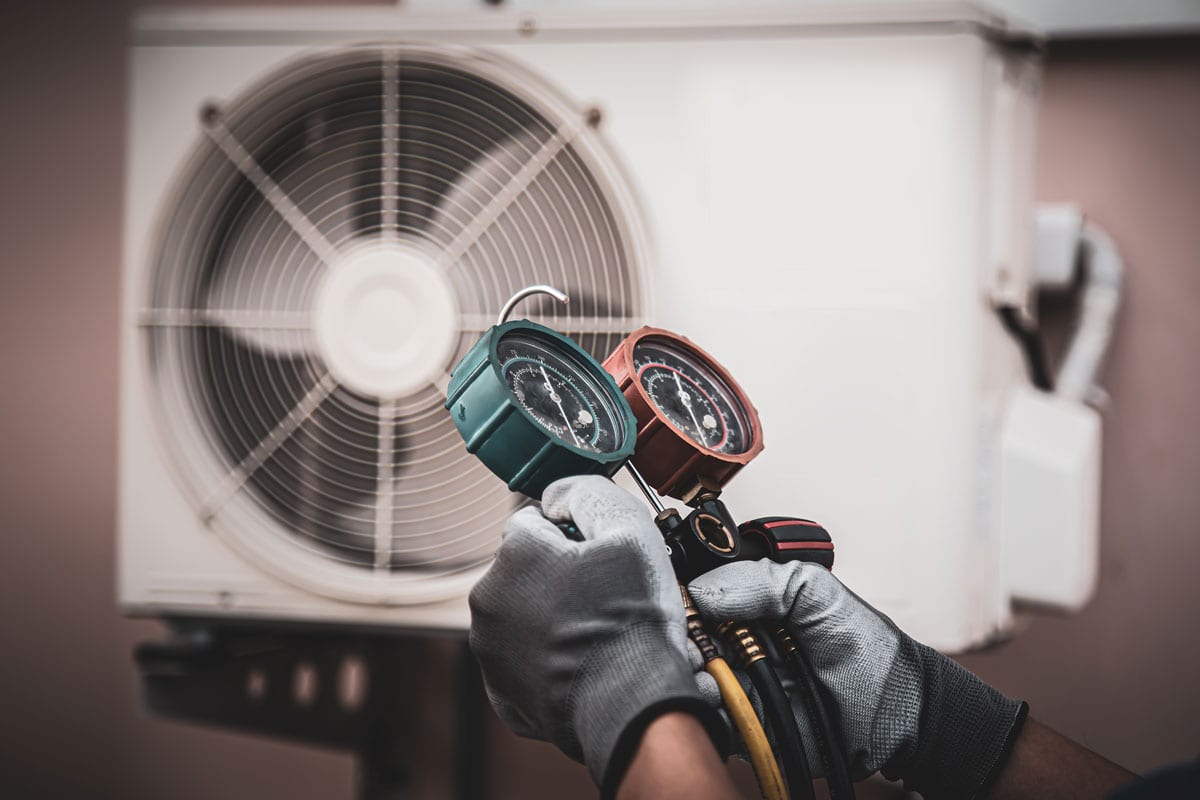
It can be frustrating when the evacuation process fails to remove all contaminants that can threaten the refrigerant system.
If you suspect a failure in your evacuation process, here are some barriers to look out for before repeating the process all over again.
Leak
Even the smallest leaks can cause the process to fail. You can inspect the hoses, fittings, manifolds, and joints to see if any of these parts are not properly sealed.
Vacuum Restrictions
Anything that can prevent the vacuum from reaching its maximum capacity should be inspected, including the length of the hose you are using, valve cores, vacuum manifolds, the hose core depressors, and even the size of the hose. These parts can restrict your vacuum and cause the process to slow down.
Improper Placement Of The Micron Gauge
Make sure that you mounted the micron gauge at a higher level than the system pipes, and if it's properly connected to the tee of your core removal tool or to the system.
Off-gassing
Using new hoses is advised when performing the evacuation process. Old ones might have already been contaminated if it has been used with your refrigerant, thus, making them prone to moisture and other contaminants.
Usage Of A Faulty Pump
The problem could be coming from the vacuum pump itself. Replace the pump if it cannot pull below 50 microns once it is isolated from the system.
Is Refrigerant A Type Of Gas? If So, Why Is It Important?
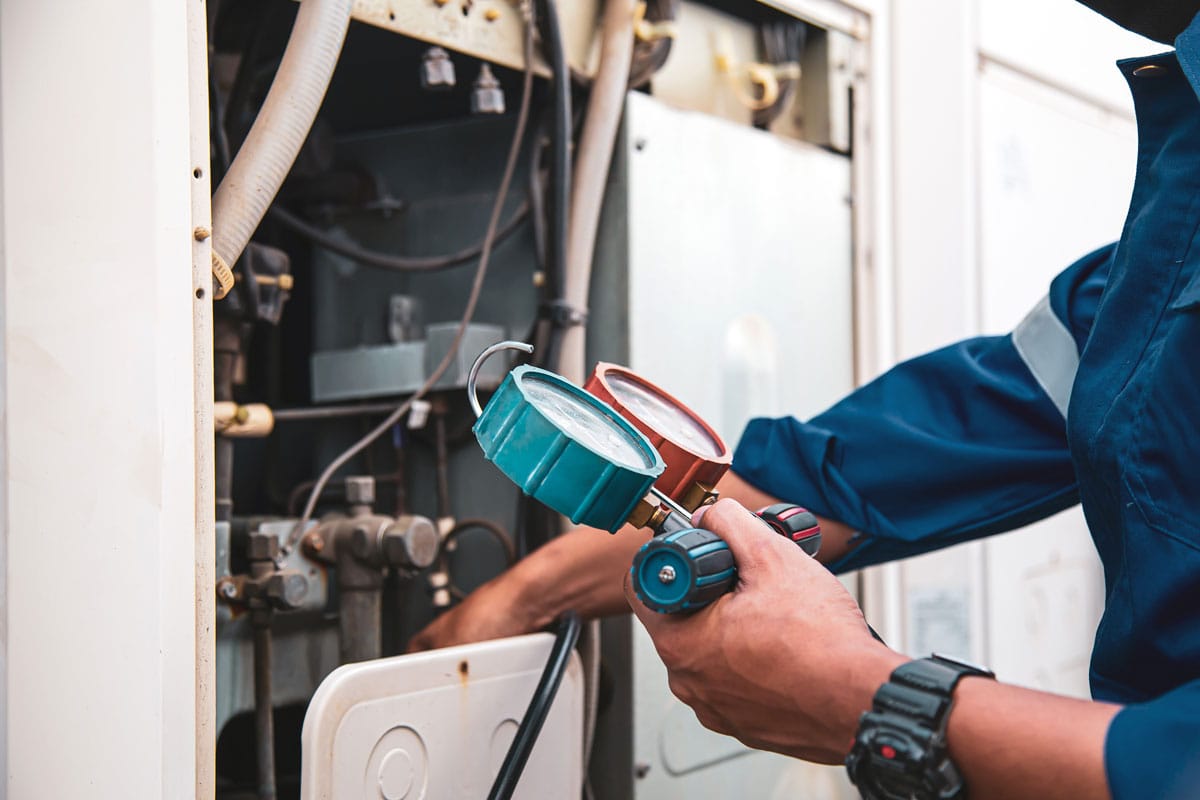
A refrigerant is a liquid or a low-pressure gas chemical component used in appliances such as air conditioners, refrigerators, and heat pumps.
It can absorb heat and transfer it from one place to another once it is pressurized and compressed by the system's compressor. In simpler terms, the refrigerant is the reason why your air conditioner can cool the room.
The absence of refrigerant in the system will hinder the appliance from absorbing heat. The compressor is also more likely to fail due to the lack of refrigerant. However, too much refrigerant in the system can also cause problems.
Can You Refill The Refrigerant By Yourself?
Even if you have a recharging kit at home, US Environmental Protection Agency does not recommend refilling your system's refrigerant by yourself. Doing so can cause harm to your health, and to the environment.
Although refrigerants are essential components of any cooling and heating system, everything has a downside.
Refrigerants are toxic, flammable, and can cause physical hazards to anyone who inhales it. In fact, inhaling excessive refrigerants can be fatal, because it can stop oxygen from entering the lungs and cells.
The best thing you can do is call your HVAC technician. Only professional technicians are recommended to perform the replacement of refrigerant in your unit.
These people are well-equipped with the right knowledge when it comes to handling refrigerants without causing themselves and the environment any harm.
However, if the refrigerant leak is already happening, you may experience physical symptoms such as skin irritation, nausea, headache, and lung and throat irritations.
When the leak persists, these physical symptoms can get worse so if you suspect a possible refrigerant leak, do not hesitate to call the professionals.
Although it is not cancerous and doesn't have proven long-term effects on those who have inhaled it, still, you should seek medical help to prevent things from getting worse.
In Closing
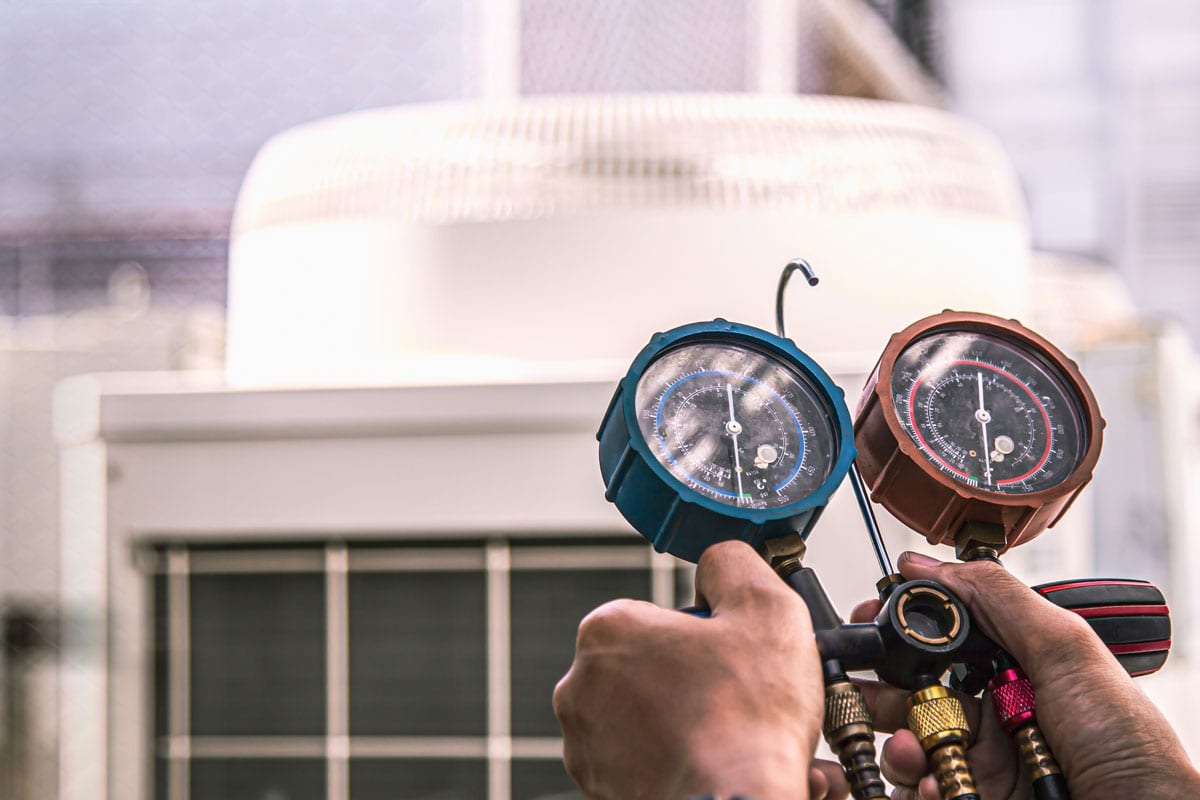
The evacuation process is essential to maintain the longevity of our appliances. Remember that it is a two-stage process done after installing the unit and after the maintenance repair.
If it will require you to refill the refrigerant, do not hesitate to call your HVAC technician. Your health and safety should always be your utmost priority, and refrigerants are something you do not want to underestimate.
Before you go, don't forget to check out these posts, too:


